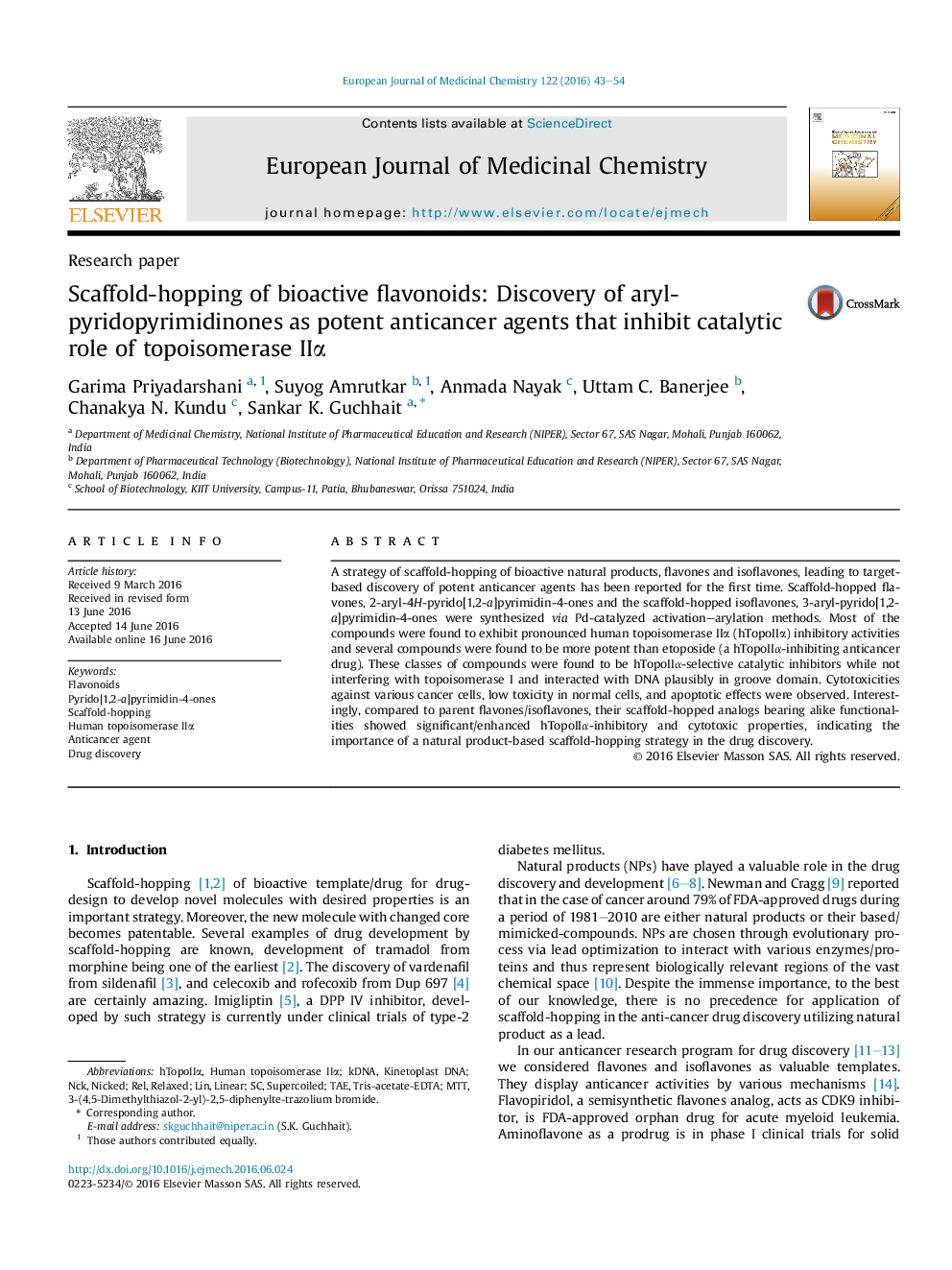| Article ID | Journal | Published Year | Pages | File Type |
|---|---|---|---|---|
| 1394904 | European Journal of Medicinal Chemistry | 2016 | 12 Pages |
•Represents an unprecedented target-based scaffold-hopping of NPs, flavonoids.•2/3-Arylpyridopyrimidinones were synthesized via Pd-catalyzed activation–arylation.•Compounds were potent hTopoIIα-selective catalytic inhibitors.•Interaction with DNA in groove domain was identified.•Afforded significant/higher activities than etoposide, flavones and isoflavones.
A strategy of scaffold-hopping of bioactive natural products, flavones and isoflavones, leading to target-based discovery of potent anticancer agents has been reported for the first time. Scaffold-hopped flavones, 2-aryl-4H-pyrido[1,2-a]pyrimidin-4-ones and the scaffold-hopped isoflavones, 3-aryl-pyrido[1,2-a]pyrimidin-4-ones were synthesized via Pd-catalyzed activation–arylation methods. Most of the compounds were found to exhibit pronounced human topoisomerase IIα (hTopoIIα) inhibitory activities and several compounds were found to be more potent than etoposide (a hTopoIIα-inhibiting anticancer drug). These classes of compounds were found to be hTopoIIα-selective catalytic inhibitors while not interfering with topoisomerase I and interacted with DNA plausibly in groove domain. Cytotoxicities against various cancer cells, low toxicity in normal cells, and apoptotic effects were observed. Interestingly, compared to parent flavones/isoflavones, their scaffold-hopped analogs bearing alike functionalities showed significant/enhanced hTopoIIα-inhibitory and cytotoxic properties, indicating the importance of a natural product-based scaffold-hopping strategy in the drug discovery.
Graphical abstractFigure optionsDownload full-size imageDownload as PowerPoint slide
